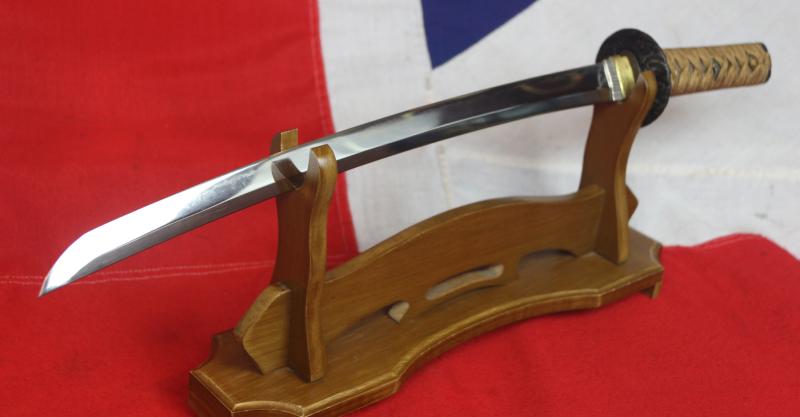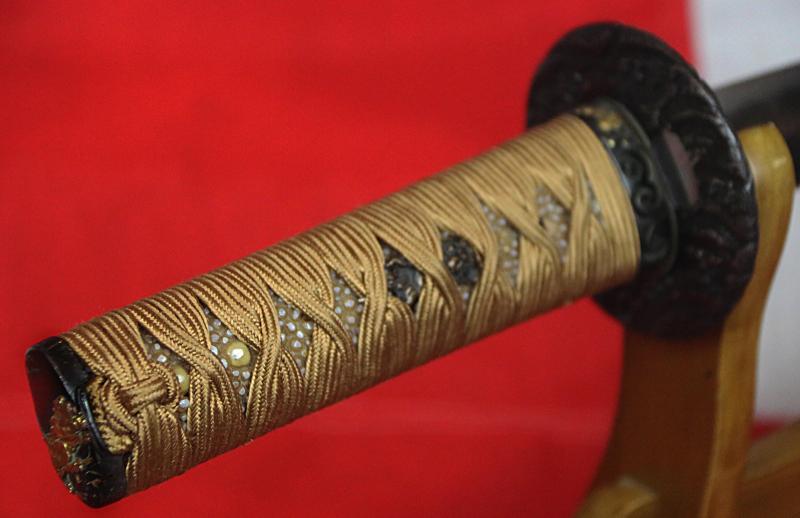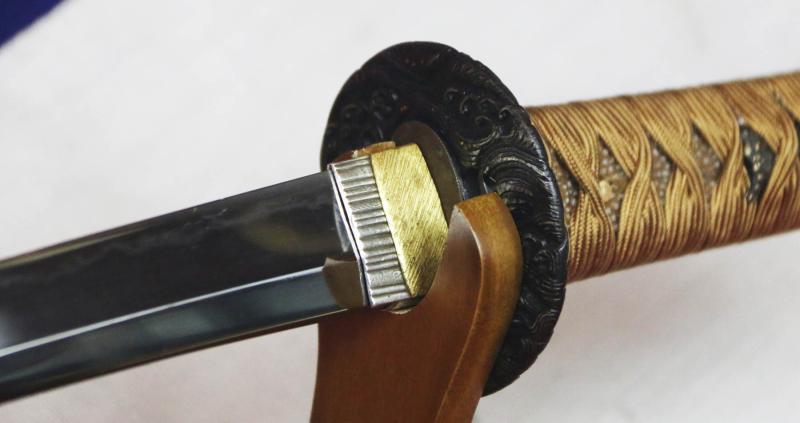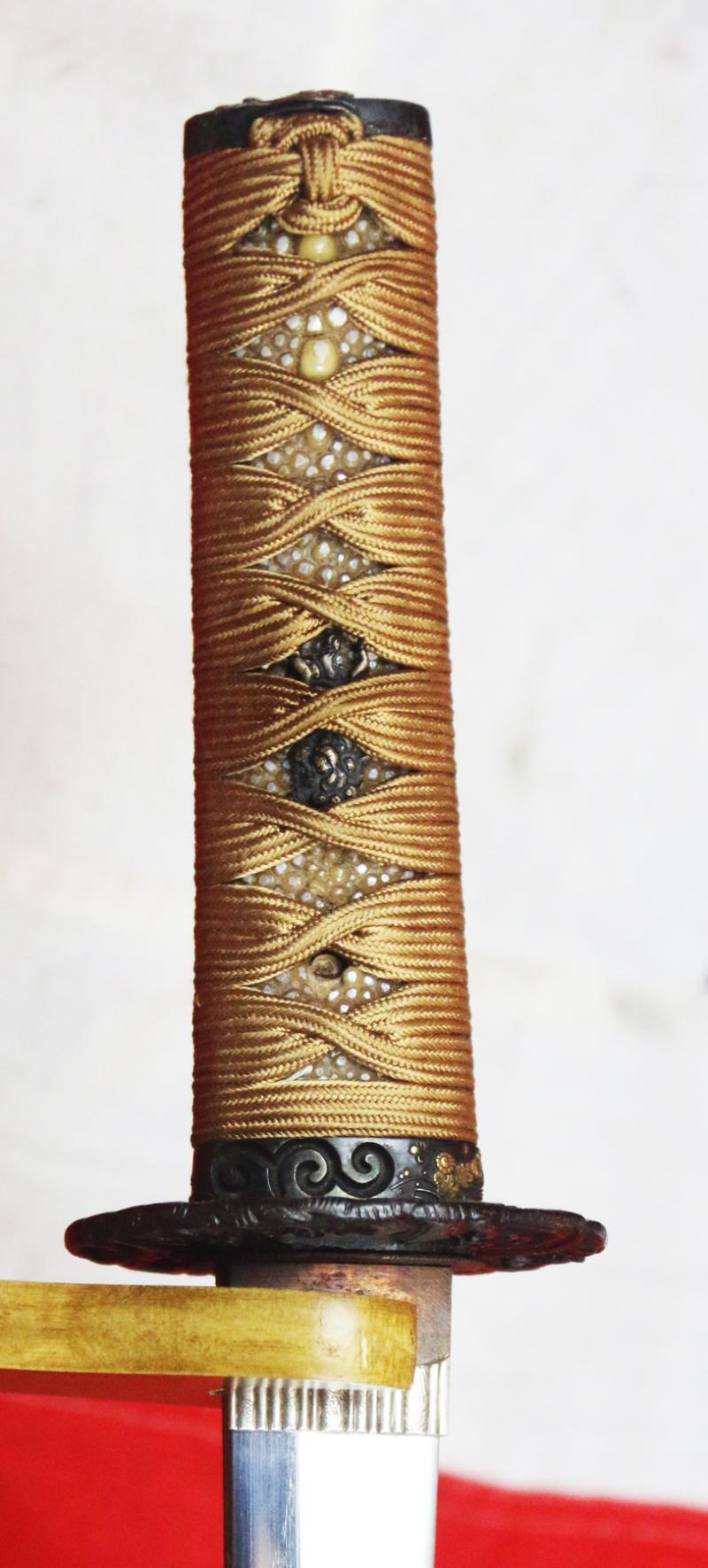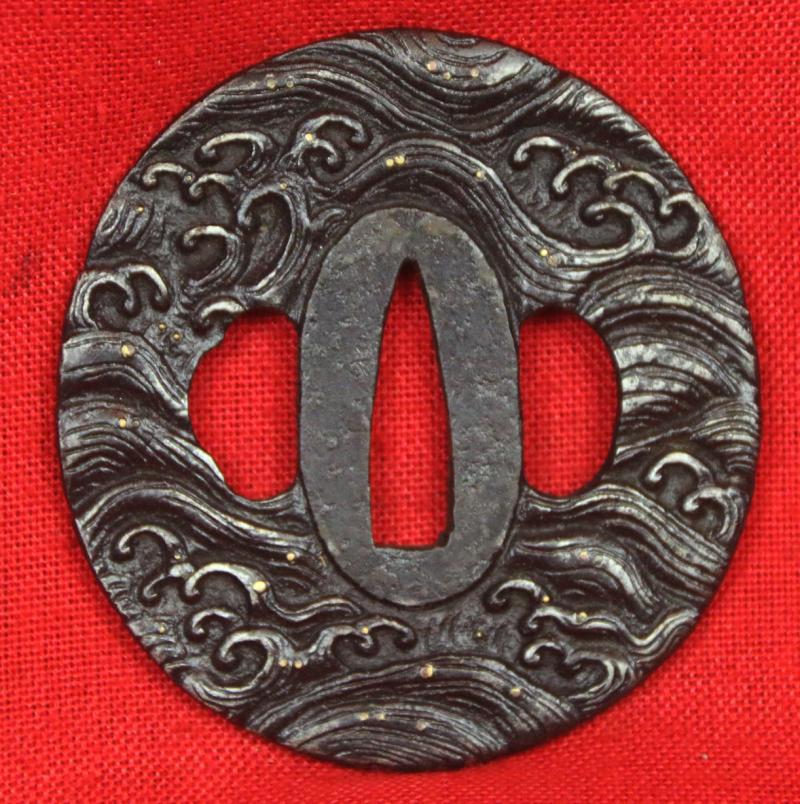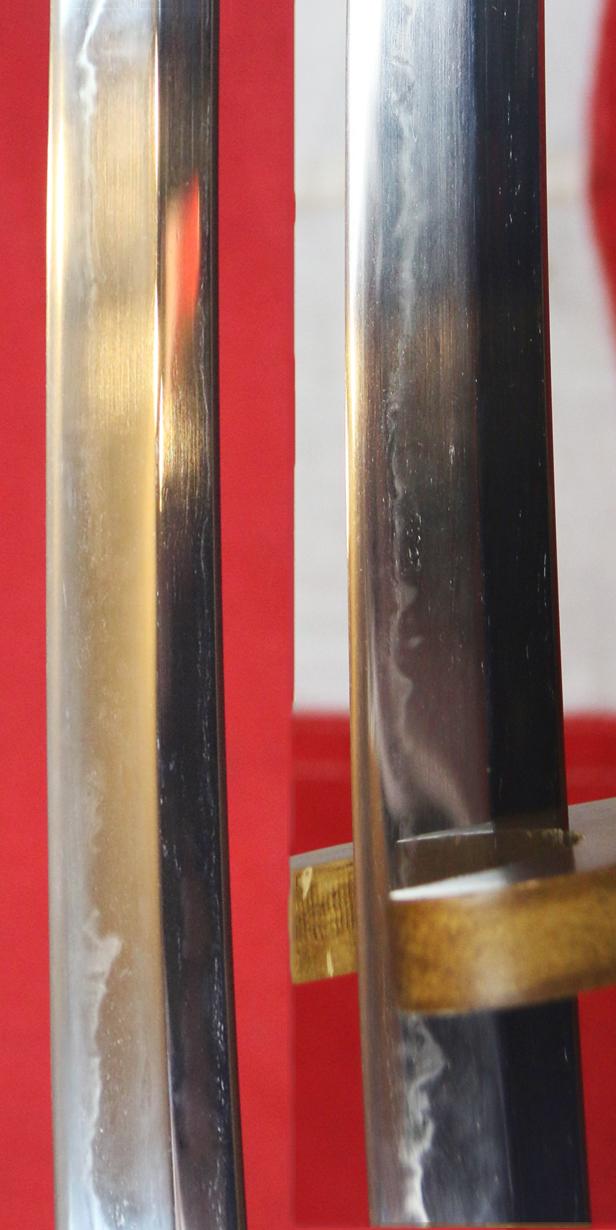A Superb Koto Period Wakizashi Signed By Master Smith Sukesada
Fabulous blade in superb condition showing an amazingly complex and beautifully active hamon. One of the Sukesada, Bizen smiths. Very fine two part blade collar habaki in gold and silver. A pair of Shishi lion dog menuki under the gold silk tsukaito over traditional samegawa. A super kashira in shakudo silver copper and gold, with a takebori shishi. The fuchi is very nice quality in shakudo with deep scroll engraving and applied pure gold chrysanthemum flowers.
An Omori School shibuichi tsuba. The shibuichi tsuba of marugata shape, with a kozuka and kogai hitsu-ana, the nakago-ana with some suaka sekigane, finely worked takabori and takazogan to depict breaking waves carved in the typical manner of the Omori school with inlaid gilt-metal spray drops. Plain black urushi lacquer saya, its original Edo period saya, with vacant kozuka and kogai pockets
The highly regarded Sukesada line of swordsmiths descended in the Osafune school and are recorded as far back as the end of the Nambokucho period (around 1394). This blade here is likely placed in the Sue-Koto Period (1469-1596).Being descendant of the Ichimonji Line they were also known to have made some of the finest swords. This is where they really shine, swordsmiths such as Yozosaemon Sukesada were known to make masterpiece blades that outshone the vast majority of the time period. In fact Yozosaemon is considered one of the representative swordsmiths of the Era, going hand in hand with names like Muramasa of the Soshu/Sengo Tradition and Kanemoto of the Mino Tradition. Sukesada swords were also popular with those in high ranks and we see many tachi and longer katana being made, these were often of exceptional quality and were quite deserving of their Jchimonji lineage. Sukesada swords would spread throughout Japan, with their home forges being in Bizen province. This however ; would not last. The great flood of the Yoshii River around 1590 signalled a death toll to the Sukesada line. This flood hit Bizen province hard and wiped out nearly all of the Sukesada forges, leaving only several offshoots of the Sukesada family swordsmiths to carry out the tradition, such the Shinto period Yokoyama Sukesada family swords. The Sukesada tradition struggled to survive and eventually died out partway through the Shinto Era as it never really came close to reaching the Majesty and quality of its predecessor and mainline schools. The great flood essentially marked the end for one of the Koto Era's greatest sword making traditions.
As part of their military training, it has been said, but possibly as part of the myth of samurai training, that samurai were taught to sleep with their right arm underneath them so if they were attacked in the middle of the night and their the left arm was cut off the could still fight with their right arm. It is further said that Samurai that tossed and turned at night were cured of the habit by having two knives placed on either side of their pillow.
Samurai have been describes as "the most strictly trained human instruments of war to have existed." They were expected to be proficient in the martial arts of aikido and kendo as well as swordsmanship and archery---the traditional methods of samurai warfare---which were viewed not so much as skills but as art forms that flowed from natural forces that harmonized with nature.
An individual, in certain circumstances, apparently didn't become a full-fledged samurai until, some say, he wandered around the countryside as begging pilgrim for a couple of years to learn humility. Again this may be part of the myth. However, when all his training was completed a samurai trainee that achieved samurai status and received a salary from his daimyo, paid from taxes (usually rice) raised from the local populace, he truly became the very best at his art in the world of sword combat
Swords in Japan have long been symbols of power and honour and seen as works of art, which is exactly what they are.
In Japan the term samurai evolved over several centuries
In Japanese, they are usually referred to as bushi (武士,) or buke (武家). According to translator William Scott Wilson: "In Chinese, the character 侍 was originally a verb meaning 'to wait upon', 'accompany persons' in the upper ranks of society, and this is also true of the original term in Japanese, saburau. In both countries the terms were nominalized to mean 'those who serve in close attendance to the nobility', the Japanese term saburai being the nominal form of the verb." According to Wilson, an early reference to the word samurai appears in the Kokin Wakashū (905–914), the first imperial anthology of poems, completed in the first part of the 10th century.
Originally, the word samurai referred to anyone who served the emperor, the imperial family, or the imperial court nobility, even in a non-military capacity.It was not until the 17th century that the term gradually became a title for military servants of warrior families, so that, according to Michael Wert, "a warrior of elite stature in pre-seventeenth-century Japan would have been insulted to be called a 'samurai'".
In modern usage, bushi is often used as a synonym for samurai
Every item is accompanied with our unique, Certificate of Authenticity. Of course any certificate of authenticity, given by even the very best and highly esteemed specialist dealers, in any field, all around the world, is simply a piece of paper,…however, ours is backed up with the fact we are the largest dealers of our kind in the world, with over 100 years and four generation’s of professional trading behind us. The current two partners alone, combined together, have over 96 years of professional experience within the trade.
Code: 25522
4995.00 GBP



